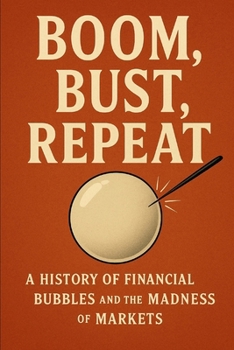Boom, Bust, Repeat: A History of Financial Bubbles and the Madness of Markets
From the tulip fields of 17th-century Holland to the digital frenzy of the cryptocurrency markets, the story of finance is inseparable from the history of human folly. This sweeping chronicle explores the most spectacular financial bubbles of the past four centuries, revealing how time and again, rational people have been swept up in a collective madness. It is a tale of greed, hope, and the timeless fear of missing out, where ordinary assets-or sometimes assets of no value at all-are transformed into vessels of unimaginable fortune, only to collapse in a devastating return to reality.
Embark on a fascinating journey through the anatomy of market manias. Each chapter delves into a unique delusion, from the national speculative fever of Britain's South Sea Company to the "zaitech"-fueled Japanese asset bubble and the subprime mortgage crisis that brought the world to the brink in 2008. Discover the charismatic promoters, the flawed innovations, and the powerful herd psychology that drove otherwise sensible individuals to mortgage their futures on the promise of effortless riches. You will travel from the backroom taverns where canal shares were traded in the 1790s to the chaotic Reddit forums that fueled the meme stock phenomenon, uncovering the universal patterns that link these episodes across continents and centuries.
More than just a history of booms and busts, this book provides a framework for understanding the predictable lifecycle of speculative excess. It unpacks the powerful combination of a compelling new narrative, the intoxicating fuel of easy credit, and the widespread belief that "this time is different." By examining the rise and fall of everything from nickel and silver to dot-coms and real estate, readers will learn to recognize the tell-tale signs of a market that has become unmoored from its fundamentals.
This is not a guide to predicting the next crash, but an essential historical perspective on the financial fevers that have shaped our world. It is a cautionary tale that demonstrates how the same human emotions that drove Dutch merchants to ruin over a flower bulb are still at play in today's high-speed, globalized markets. By understanding the manias of the past, we can become more attuned to the echoes of irrational exuberance in the present.
Related Subjects
History




